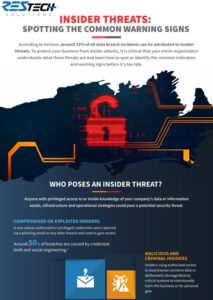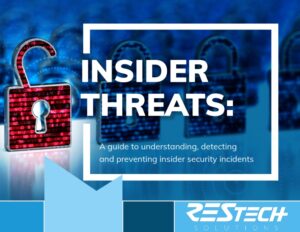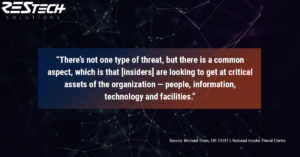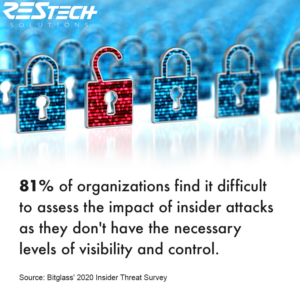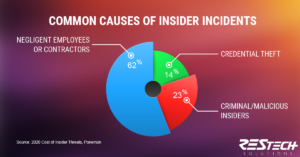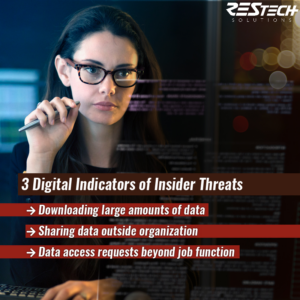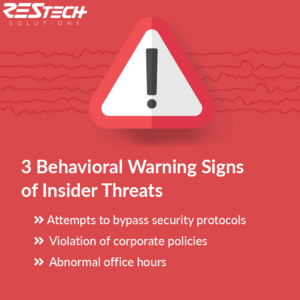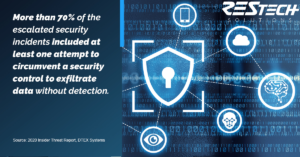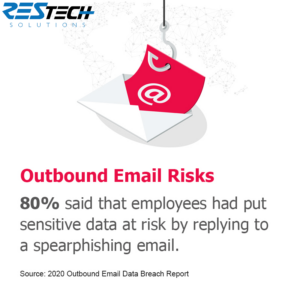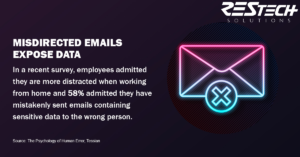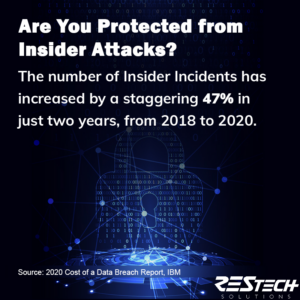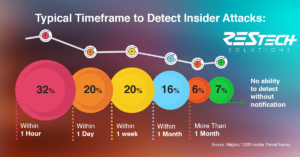Insider Threats
February 2021 - Security
Tips/Info
Although the motivations of threat actors may differ from one to another, malicious insider threats can affect anyone. Whether you’re a small or medium-sized business or operate an organization with 500+ employees, cybercriminals rarely discriminate. Money and data are just as valuable to them, regardless of where it comes from.
Understanding the true impact caused by an insider incident is more difficult than it sounds. Incidents can have lasting complications, especially when the extent of an insider threat is unknown. Without a thorough assessment, you could be uncovering new issues and picking up the pieces of an incident long after it occurs.
Pay attention to your employees. If you notice anything out of the ordinary, such as a lack of motivation, working odd office hours, or blatant security violations, you may have an insider incident waiting to happen. Monitoring employee activity within your company is vital to making sure your well-earned data is secure from prying eyes.
Connecting to secure VPNs, locking devices when not in use, reporting suspicious emails – these are just a handful of security protocols your employees should be adopting in the workplace. You may think following security procedures like these are basic common sense, many employees, unfortunately, fail to follow the simplest of protocols, either purposefully or unwittingly.
To implement security procedures in your company, it helps to instill a security-minded culture within your employee base. Spending thousands on the best security software is useless if your employees aren’t utilizing the software properly or bypassing security measures. We recommend having security awareness training in addition to security software to help your employees make the most out of your investment.
Are your employees’ data permissions adjusted as they move to new roles within your company? As employees gain access to new permissions, they can easily build up an impressive portfolio of access points they don’t need. By organizing data with a least-privilege model, only employees who need a certain amount of data to do their basic job function will get relevant access.

